This post shows a few images of Egrets and describes some of the usualness, cleverness and uniqueness of these birds. I have added Egrets to my birds category.
The smallest of the white Egrets is the Cattle Egret. It looks different to the other Egrets because of its hunched appearance. The colour of its legs is not a good identifier as it varies so much and can be anything from yellowish-green to black and even red in the early part of breeding season. During its breeding season the males take on an orangy-buff crown and orangy-buff coloured back feathers.
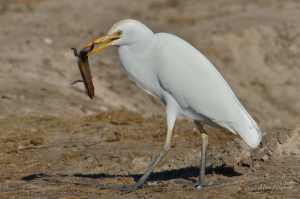
Cattle Egret with an afternoon snack
The Cattle Egret is usually found alongside herbivores such as cattle, buffalo, eland or elephants walking through the grass disturbing insects and small reptiles as the move. Though they are not always found close to water.
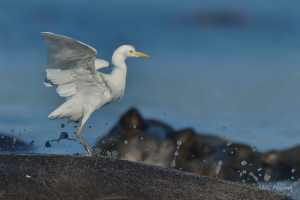
Cattle Egret hopping between Hippos
The Cattle Egrets are also known to land on herbivores and pick parasites and ticks off them, much like oxpeckers, which is where they originally got their name as ‘tick birds’.
The small size, yellow bill and hunched stance are important identifying characteristics.
The second smallest of this group is the Little Egret. This character is found close to water, hunting in the water-logged grass or reeds alongside the river or along the water’s edge.
The Little Egret can be recognised by its small size, white feathers, black legs and yellow feet. It looks like it stepped in a puddle of yellow road marking paint.
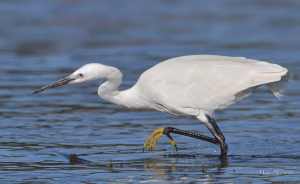
The Little Egret’s characteristic yellow feet
Another distinguishing feature of this waterside hunter is that it hyperactively dashes back and forth when hunting.
The second largest Egret is the Yellow-billed Egret. This species looks similar to the Great White Egret but there are two important differences in appearance. The gape of the Yellow-billed does not reach behind its eye and its neck does not have the characteristic ‘S’ shape of the Great White Egret.
The Yellow-billed Egret also hunts along the river’s edge
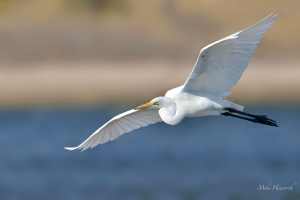
Characteristic ‘S’ shape to the Great White Egret’s neck
Herons and Egrets fly with their necks tucked in unlike storks which fly with their necks extended. The Marabou Stork is an exception. I am not sue what the reason is but you are sure in nature there is a good reason. It probably has to do with aerodynamics as it is significantly shorter than a stork so generating linear flow and reducing air turbulence is more of an issue!
The largest of the white Egrets is the Great White Egret. This Egret looks and behaves very much like a Heron.
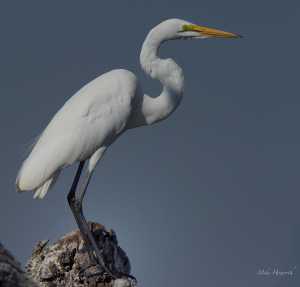
Great White Egret perched on a dead log alongside the Chobe River
The key identifying characteristics are its white colour, large size, yellow bill ( in adulthood but can be green in juveniles), black legs and ‘S’ shaped neck.
The Great White Egret is usually found hunting along a river’s edge.
Egrets like herons have fine wispy feathers on their back during the breding season – the girls like it!!
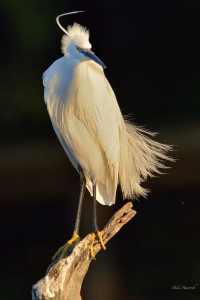
Little Egret all dressed up in breeding feathers
An interesting feature of Egrets is that their ablutions go beyond preening their feathers to keep them in good condition for flight. They apply a powder from the fraying edges of their feathers over their bodies. The powder attracts dirt which is then preened off later at a later stage.
Herons, Egrets and Bitterns are known as ‘ambush hunters’ who stalk and stab their prey. An Egret’s long neck can recoil and they can stand motionless for long periods before striking when the prey comes within striking distance. The Egret also use foot stirring as a technique to flush out their prey.
Interestingly, Cattle Egrets seem to hunt in groups but the other Egrets are solitary feeders. Most Egrets though are smart enough to roost and breed in colonies along side Darters, Storks and Openbills. A good example of this can be seen in the trees just above the rapids but downstream of Mowana Lodge in the Chobe river.
The next time you are at the river’s edge or are watching a herd of buffalo, take a closer look at the Egrets. These elegant and adaptive birds add to the interest and kaleidoscope in front of your eyes. There is a lot more natural intelligence in front of you than you might first realise.
Talent hits a target no one else can hit; Genius hits a target no one else can see.
Seek to understand nature, marvel at its interconnectedness and then let it be.
Have fun
Mike

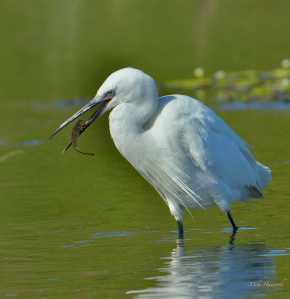
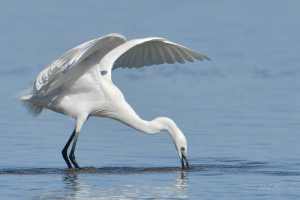
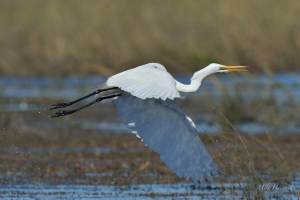

Hi Mike
Thanks for sharing this great article – enriching and enjoyable to read!
All the best, Ian